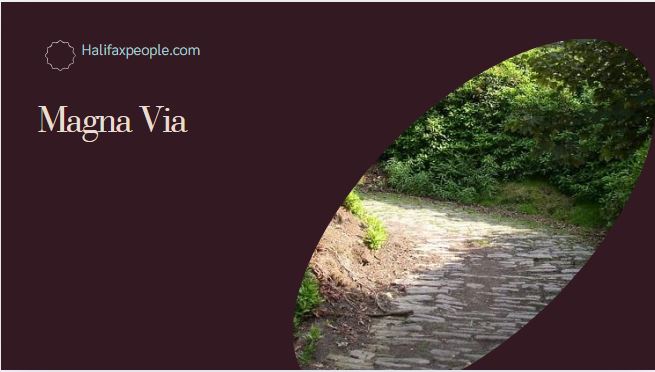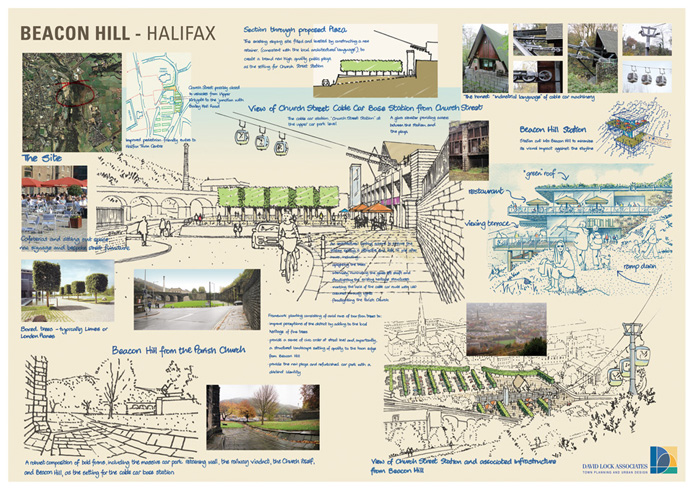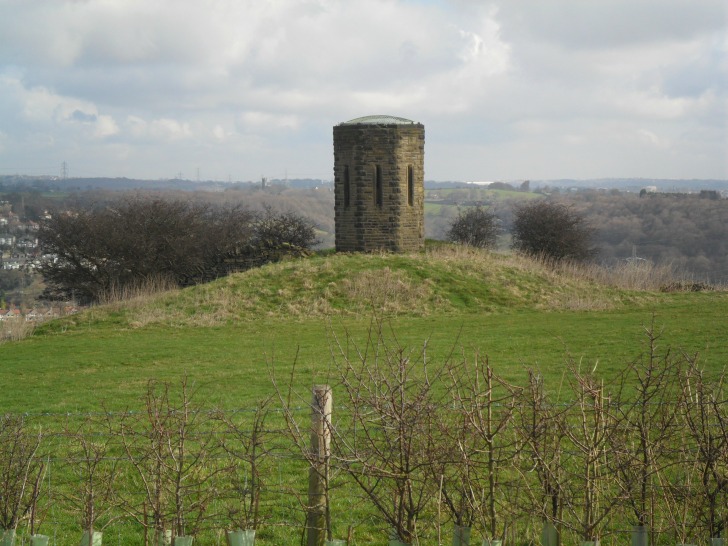Beacon Hill
850 ft above sea level. it is mentioned in Halifax history from 1615. The coiners were hung in chains there (1774-1783). Like many other hills bearing the name in England, it was used in ancient days for warnings, and in later years for jubilations. Payments have been made for providing and watching the beacon lights. It was in 1872 that the pan fell, but it was re-erected for the late Queen's Diamond Jubilee in 1897.
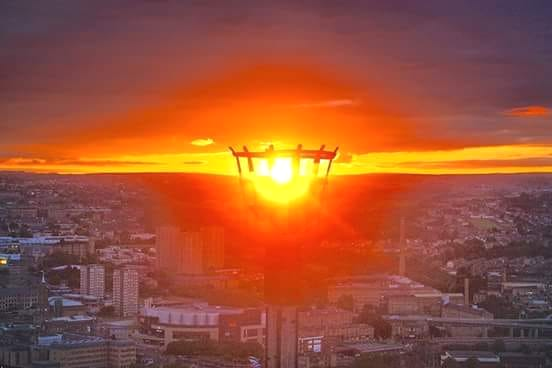
From early times, the Magna Via, the ancient road from Wakefield, provided a main route into Halifax over Beacon Hill. This route was trodden by Medieval lords of the manor and their men, by packhorses transporting wool and finished cloth, by Sir Thomas Fairfax after English Civil War defeat and by the preacher John Wesley. A grisly episode in the Hill’s history relates to the Cragg Vale Coiners. In 1774 and 1775, as a deterrent to others and in the face of great local protest, the dead bodies of Thomas and Normington, convicted murderers of excise man William Deighton, were suspended in chains on Beacon Hill and left to rot, their arms pointing towards the scene of their crime. A contrastingly happy event took place in August 1785, when Joseph Binns, accompanied by Mr Newmarch and Mr Frobisher, ascended from Beacon Hill in a hot air balloon in sight of thousands of delighted spectators, before navigating the balloon a further 20 miles. The name Beacon Hill relates to the network of beacons which conveyed news around the country, in times of both crisis and celebration. In 1588, this warned of the Spanish Armada and was on the alert in case of invasion during the Napoleonic wars from the 1790s. Bonfires and beacons have also been lit on the hill to mark royal jubilees and coronations, the peace celebrations after World War One and VE Day and VJ Day after World War 2.
The actual beacon has been replaced at various times: 1615, 1745, and 28th May 1856. A replica stands there today.
In the 18th century, the bodies of executed men – including those of the Coiners – were suspended in chains at the top of the hill as a warning and a moral lesson for the local populace. A skull which was used in Hamlet and other productions at the Theatre Royal was that of one such murderer who had been hung in chains on Beacon Hill.
A beacon burned in 1588 on Beacon Hill to warn England the might of the Spanish Armada was on it's way.
A beacon basket still stands on the hill to remind visitors and locals the part the area played in warning the nation of it's impending disaster.
Troops loyal to Oliver Cromwell marched up Trooper Lane and over Beacon Hill in the mid 17th century and the gibbet used to stand on Beacon Hill as a reminder of the consequences of crime and misdemeanours.
From 1561, it was a crime of Misprision of Treason to manufacture counterfeit foreign coins. For anyone forging British coins, the charge was High Treason, and the punishment for this was:
- That the offender be drawn to the gallows, and not be carried or walk
- That he be hanged by the neck and then cut down alive
- That his entrails be taken out and burned while he is alive
- That his head be cut off
- That his body be divided into four parts
- That his head and quarters be at the king's disposal
This punishment was later modified and in many cases, the offenders were executed by hanging at the Tyburn. Some were taken down after execution and put into chains and hung on Beacon Hill for all to see – the bodies remaining there for several months.
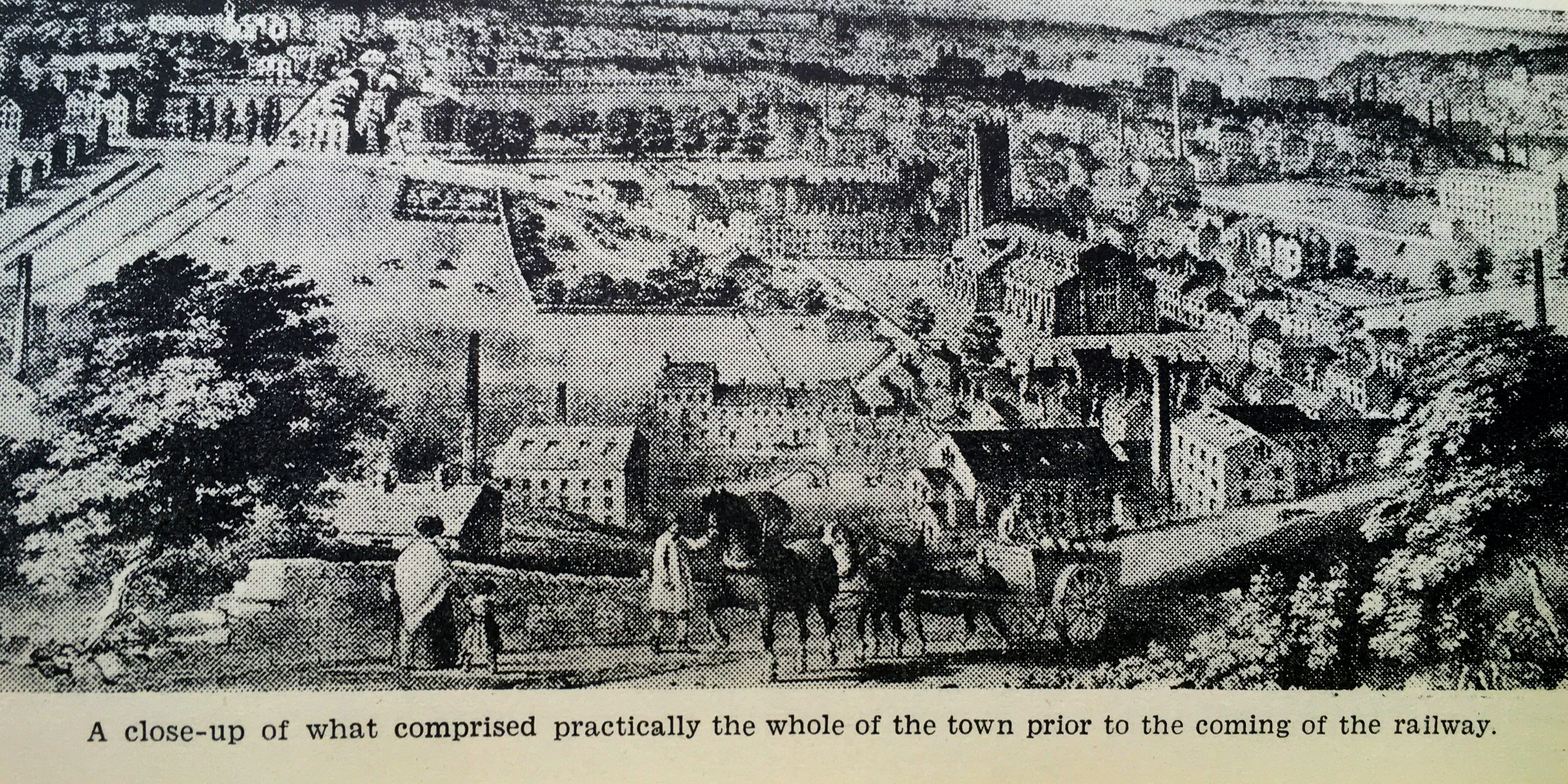


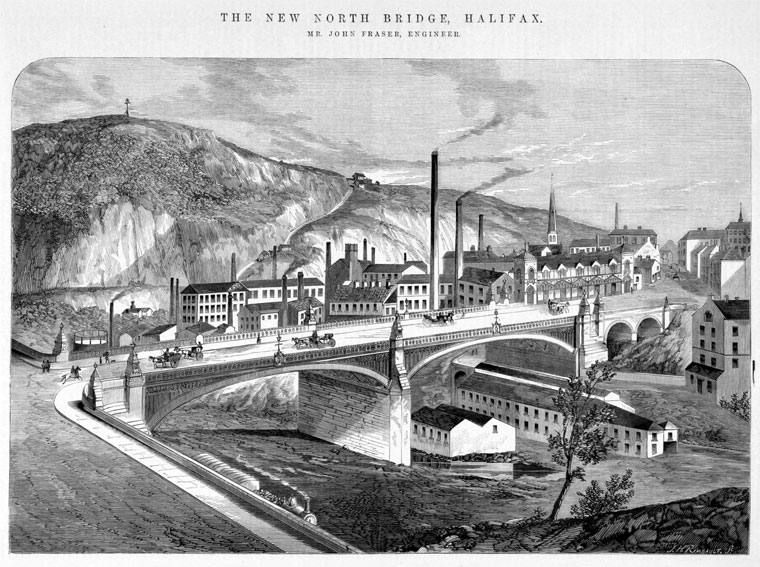
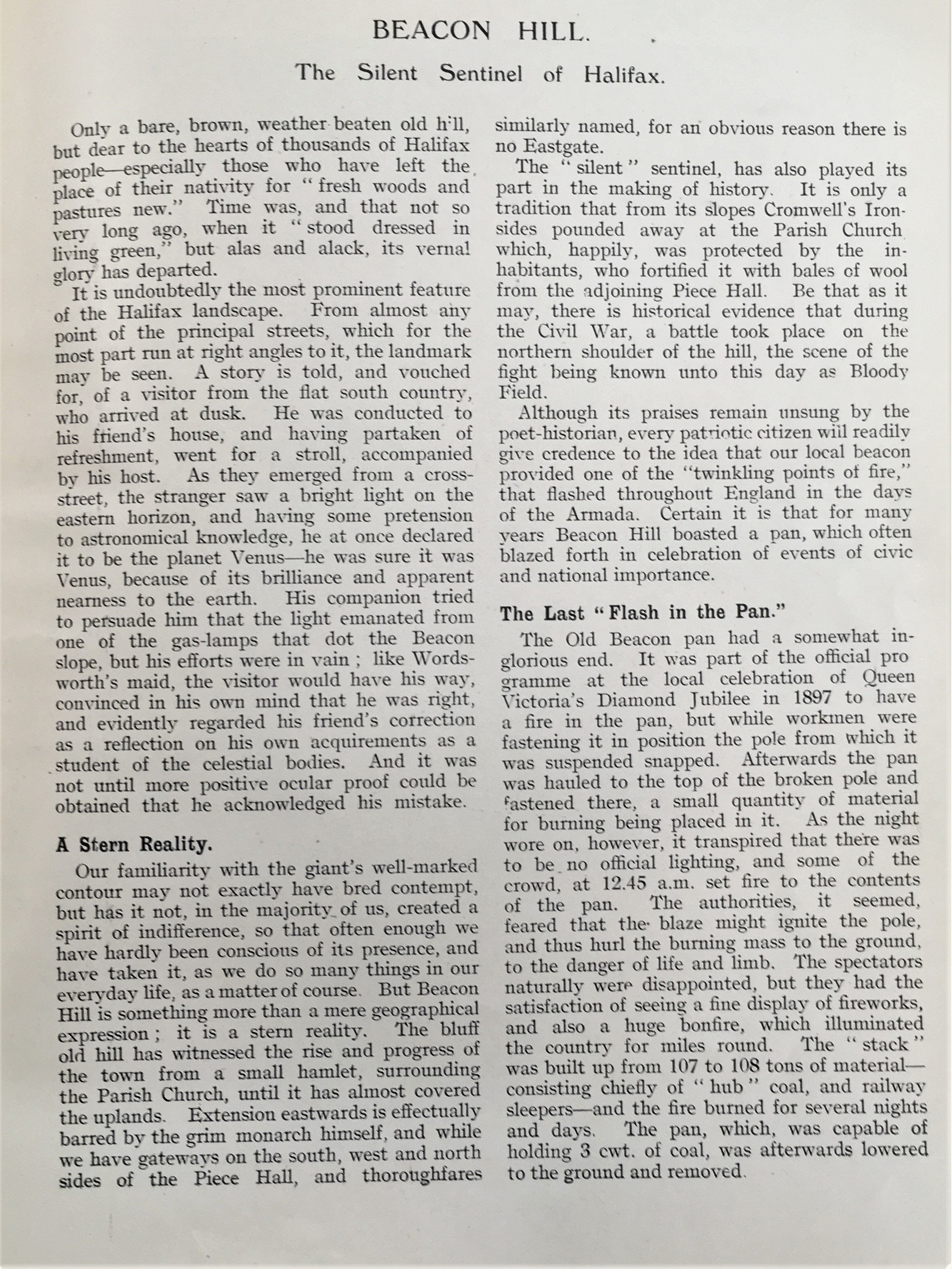
A very early view from Beacon Hill
Beacon Trees
|
|
|
|
|
|
Coldwell Hill - between Dark Lane and Pump Lane, Shibden
Although the history of Calderdale is not exactly short of colourful characters, few seem quite so Dickensian as Jonathan Walsh, who once owned the now-demolished Coldwell Hill and Lower Dove House farms at Southowram. A landowner, money-lender and textile manufacturer, Walsh was notorious in the district for his eccentricity, meanness and temper. Caroline Walker, resident at Walterclough Hall during his later years, bluntly refers to him in her diaries as “an old usurer” and “extremely importunate”.
Walsh indulged in frequent bouts of litigation against his neighbours, and was believed to spend at least a hundred pounds a year pursuit of this passion, a considerable sum at that time. It was said that he would “rather spend a pound for law than a penny for ale”. He was also known to ride around the area on a mule, bearing a whip which would be used on anybody who displeased him, whilst his speech was so uncouth and haranguing that Dr. Henry Coulthurst, the esteemed Vicar of Halifax from 1790 to 1817, used to hide if he saw the man coming. The clergy were apparently a favourite target for Walsh’s ire.
Perhaps his animosity towards organised religion accounted for his unusual mode of burial. Rather than choosing to be interred in consecrated ground, he left instructions that he should be laid to rest on his own property. Thus, after his death at a house on Horton Street in Halifax, the pall-bearers set out at midnight, carrying Walsh’s coffin back to his home at Southowram. As he had been a man of some considerable stature—well over six foot tall, by all accounts—it cannot have been an easy task to haul that burden up Beacon Hill, some years before the construction of the Godley Cutting.
Walsh’s inhumation was conducted by candlelight at four o’ clock in the morning, and in further defiance of religious convention, he’d directed that he be buried with his head to the east. The spot he had chosen was in the corner of a field near where Pump Lane meets the ancient holloway variously known as Dark Lane, Magna Via or Wakefield Gate, still a well-used route into Halifax at the time. His wife had previously been buried in the same field; however, Mr. Walsh had also given instructions that he was to be planted in the opposite corner!
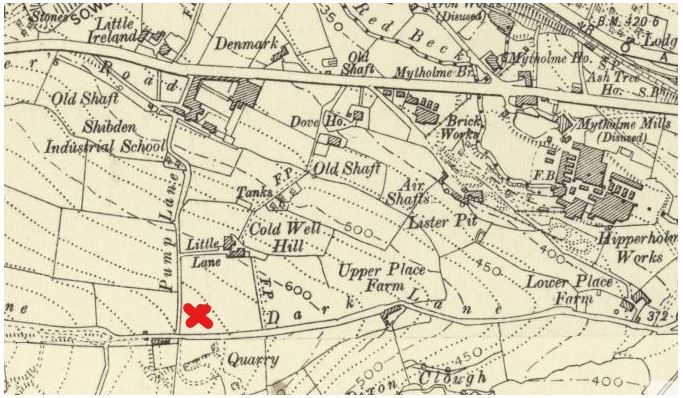
The reason Walsh had selected for his grave a spot so close to the former highway seems typical of his perverse character. In 1924 (whilst wondering whether Walsh’s biography had been related to Emily Brontë in 1837 when she taught at Law Hill School nearby), the venerable Halifax historian T.W. Hanson noted: “The old packhorse road passed through his land, and Walsh was provoked many times because the weavers and others would trespass over his fields instead of keeping to the road. Tradition says he was buried close to the road so that his ghost might haunt the travellers”.
Sadly, no sightings of Jonathan Walsh’s irate revenant have been recorded, but it seems inevitable that for some time after his interment, the superstitious locals will have regarded the area with dread, especially as the grave was on unconsecrated ground. For instance, Philip Ahier mentions that during the Nineteenth Century, a stretch of woodland near Kirkburton was avoided by locals, who feared they would meet the ghost of a woman who had received an unconsecrated burial there. Perhaps it was not just the construction of the Godley Cutting which caused Wakefield Gate to fall into disuse…
However, it seems that the local folk Jonathan Walsh so despised had the last laugh. Although Walsh’s land originally passed to his grandson, it was eventually absorbed into the Shibden Hall estate and then leased to the quarrying company, Maude & Dyson. Following the discovery of Walsh’s mortal remains in 1896, the enterprising firm saw no need to respect the dead and instead, placed the bones on public display, charging the public two pence each to inspect them. Over the following days, thousands of people visited the grisly attraction, until finally the skeleton was “kicked to pieces by drunkards”.
If you have enjoyed your visit to this website, please spread the word by clicking the 'like' and 'share' buttons below. Thank you
